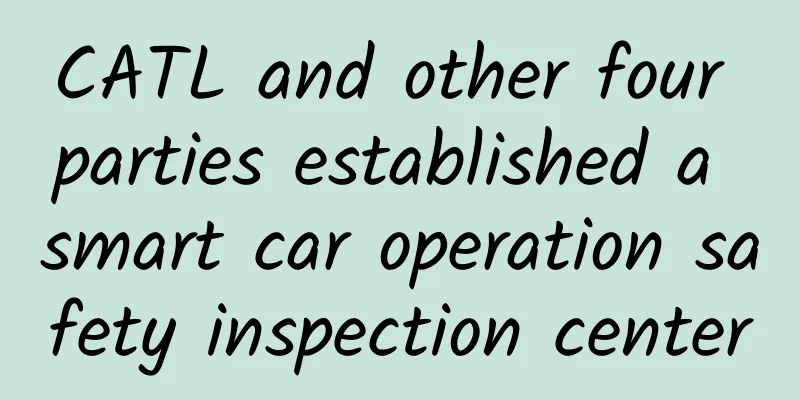Multiple factors have led to an increase in the number of critically ill patients recently! The elderly are "positive", beware of "silent hypoxia"

|
How is the treatment of infected people in Beijing recently? How should the elderly be monitored after being infected with the new coronavirus? What symptoms require timely medical treatment? ... In response to the questions of concern to netizens, Li Yanming, director of the Department of Respiratory and Critical Care Medicine of Beijing Hospital, Cao Bin, deputy director of the National Center for Respiratory Medicine, and Zhang Wenhong, director of the Department of Infectious Diseases of Huashan Hospital Affiliated to Fudan University, provided interpretations. Multiple factors have led to the recent increase in critically ill patients in Beijing Li Yanming, director of the Department of Respiratory and Critical Care Medicine at Beijing Hospital, said that the cold winter weather, especially in the vast northern regions, is the peak season for respiratory infectious diseases. Multiple factors have led to an increase in the number of critically ill patients in Beijing recently. Li Yanming introduced that Beijing Hospital is also the National Geriatrics Research Center, which treats many elderly patients. Some elderly people developed severe symptoms after being infected with Omicron, but after treatment, the overall prognosis is good. Tong Zhaohui, deputy director of Beijing Chaoyang Hospital, said that Chaoyang Hospital's average daily emergency and fever clinic visits are representative among general hospitals. According to recent statistics, the hospital's fever clinic visits average 350 to 400 cases per day, and the emergency department visits average about 500 cases per day. Beware of silent hypoxia after infection in the elderly Li Yanming introduced that winter is a cold season with a high incidence of respiratory infectious diseases. The elderly are a vulnerable group and a high-risk group for severe respiratory infectious diseases. Li Yanming reminded that if the elderly at home have a fever or are infected with the new coronavirus, they must be monitored more closely. The elderly may not react as obviously to abnormalities in the body as young people. For example, some elderly people have already had a fever, but they don't know they have a fever. In addition, the elderly may suffer from "silent hypoxia" after being infected with the new coronavirus. The family feels that his breathing state seems to be quite stable, but the blood oxygen saturation may be relatively low. On the evening of December 21, Zhang Wenhong, director of the Department of Infectious Diseases at Huashan Hospital Affiliated to Fudan University and director of the National Center for Infectious Diseases, also mentioned in his speech that we should be wary of "silent hypoxia" in the elderly. Zhang Wenhong said that some elderly patients were sent to the hospital too late because they were slow to react to hypoxia and could not even feel chest tightness or breathing difficulties . This phenomenon can be called "silent hypoxia". He gave an example that a 90-year-old man was lying in bed motionless and had been hypoxic for a long time when the abnormality was discovered. Especially for the elderly whose children are busy and who are taken care of by their aunts, the risk of this "silent hypoxia" may be higher. In what situations should the elderly seek medical attention in time? For elderly people living alone, they should closely monitor their overall physical condition, including heart rate, blood pressure, pulse rate, respiration, peripheral blood oxygen saturation, etc., and seek medical attention in time if any deterioration occurs. It is also necessary to pay attention to changes in the general living conditions of the elderly, such as whether they can eat well , whether their bowel movements are normal, whether they have urinary incontinence, and whether their urine volume has decreased significantly . We should also pay special attention to the mental state of the elderly. If the elderly show obvious drowsiness, communication difficulties, do not recognize people, and express illogically , these are all dangerous signals. If some new abnormalities occur, such as difficulty breathing when there was no difficulty before, you need to seek medical attention promptly. Elderly people with underlying diseases such as chronic obstructive pulmonary disease, asthma, diabetes, coronary heart disease, etc. also need to seek medical treatment in a timely manner if their underlying diseases worsen after infection. Li Yanming reminded that if elderly people over 80 years old, who have serious underlying diseases and have not been vaccinated against COVID-19 are infected, their family members should be more careful in observing and caring for them, and should seek medical treatment in a timely manner if any problems arise. What should we do if we encounter "silent hypoxia"? Cao Bin, deputy director of the China-Japan Friendship Hospital, director of the Department of Respiratory and Critical Care Medicine, and deputy director of the National Center for Respiratory Medicine, suggested that vulnerable people should receive antiviral drug treatment as early as possible in the early stages of the disease , and prepare a finger oximeter for critical care monitoring. He mentioned that some elderly people still do not have obvious chest tightness or difficulty breathing when they are severely hypoxic (even when the blood oxygen saturation is less than 70%), "This is very dangerous and requires immediate oxygen inhalation." "If hypoxia is not corrected within a short period of time, the patient can easily progress to critical pneumonia." Zhang Wenhong emphasized that the threshold for detecting severe risks must be pushed forward, and suggested that neighborhood committees or companies could give every family with elderly people a pulse oximeter. Elderly people should also be alert to viral pneumonia Cao Bin said that statistics from the China-Japan Friendship Hospital on some recent mild cases of Omicron showed that most patients' nucleic acid tests turned negative within 5 to 7 days, and only 10% turned negative after more than 7 days. Severe cases mean the potential for death, including worsening of underlying diseases (such as tumors, cerebral hemorrhage, cerebral infarction, cirrhosis, uremia, etc.). "We have also seen that a large number of patients' severe illnesses are indeed caused by viral pneumonia , and most of them occur in vulnerable groups, such as people over 65 years old, obese, with underlying diseases, tumors, immunodeficiency, etc., but the most terrifying thing is that patients without obvious underlying diseases can also cause Omicron viral pneumonia ." Among the four cases of Omicron viral pneumonia shared by Cao Bin, there was a 50-year-old man with no obvious underlying disease, and a 48-year-old man who had received three doses of the vaccine but had a history of obesity and hypertension for ten years. Omicron virus pneumonia is characterized by diffuse ground-glass shadows in both lungs, which are characteristic features that often appear in imaging one week after infection. "We have seen many critically ill patients with severe respiratory failure who need mechanical ventilation in the prone position, and even suffer from shock caused by the virus," said Cao Bin. Zhang Wenhong pointed out that the main factor in judging whether the symptoms are mild or severe is whether there is a high fever. If the high fever persists for several days or if there is difficulty breathing, it is a serious condition. The objective indicator for evaluating the condition is the detection of blood oxygen saturation. If it is lower than 93, it is more dangerous. If it is lower than 95, you should be alert and seek medical attention in time. At the same time, you should also measure the pulse. If the pulse is very fast, you need to worry about whether the lungs and heart are affected. Cao Bin said that when the disease develops to a critical stage and requires intubation, the patient's chance of survival is small , and the more recognized strategy is the protective lung ventilation strategy in the prone position. Full vaccination, early use of antiviral treatment, and good blood oxygen monitoring are all very important and effective means to prevent severe illness. How should the elderly prevent it? On the 22nd, Zhang Wenhong mentioned in a live broadcast that nutritional intake is very important for the elderly to prevent and treat COVID-19. " Protein intake and nutrition enhancement are very important for the elderly, so that once they are infected with COVID-19, they can have a stronger body resistance." Zhang Wenhong suggested that under the current high incidence of new coronavirus infections, the elderly should pay special attention to their own health status. First, they should rely on nutritional intake and strengthening, second, they should reduce the chance of infection, and third, if conditions permit, it is still necessary to increase appropriate exercise or some outdoor activities. For example, you can go out for a walk when the weather is good, but don't gather, and be sure to wear a mask when you go out, so that you can be happy physically and mentally. In addition, patients with underlying diseases must stock up on medications during this period and try to reduce the frequency of going to the hospital. The fewer visits, the lower the risk of infection. Source: Beijing Daily WeChat Official Account |
<<: How many bitter almonds does An Lingrong have to eat before committing suicide?
Recommend
The "small guy" among the great power equipment of a great country - the mobile nuclear power bank "Linglong No. 1" is here!
The world's first commercial modular small re...
Apple's coolest innovation: battery technology
Perhaps the most exciting new technology Apple un...
Worth collecting! Develop this good habit and you will benefit from it for life!
Every parent hopes that their children will have ...
Teach you how to operate your circle of friends step by step
In addition to operating social groups and person...
The cold front is coming again! Will it have an overlapping impact with the cold wave at the beginning of the month? Here comes the authoritative interpretation!
November 19-22 A strong cold front will move from...
Research on compatibility solutions for frosted glass CSS special effects
The UI girl insisted that I support the so-called...
Alibaba's investment in Guangzhou Pharmaceutical Group leads to Jack Ma's 7 guesses on the medical chess game
In Jack Ma's chess game, in addition to the f...
Google SEO Google search skills, how to use Google to search for information?
Recently, many friends have asked me if I know ho...
Fantastic ideas: 10 extremely practical smart office devices
[51CTO Translation] The products to be introduced...
Latest discovery: There are not only "three bodies" in the universe, but also terrible "devourers"
Recently, The Three-Body Problem has become a hot...
A magical journey of a "blood train"
Why is blood red? Does donating blood affect your...
What are the differences between CT, MRI and B-ultrasound? How do they work? Learn more after reading this
Simply put, CT, MRI, and B-ultrasound are all dev...
Wang Hao's new posture correction-posture assessment and rehabilitation
Wang Hao's new body correction - body assessm...
How user incentives enhance user stickiness
A very important point in publicity is to promote...









